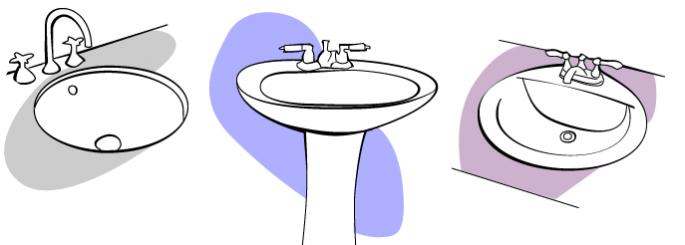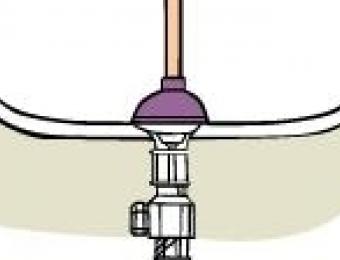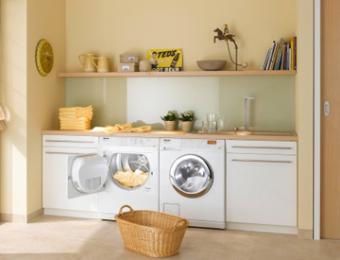The designs of basins and sinks are limited by their need to hold water - how much water, and for what particular purpose. Basins and sinks for kitchens, for example, are designed for heavy use cleaning pots and pans. Laundry basins are typicall bigger and more heavy-duty yet again. Bathroom basins are likely to be more shallow, and often favour aesthetics over the need to be extremely durable due to the fact that most of the use they'll see is from people brushing their teeth or washing their hands.
Different types of basins mount differently into benchtops and console units, and basins can also vary in terms of their shapes, materials, colours and textures. Not all sink types will suit the style of bench, bathroom or kitchen you’ve selected, and installing the wrong style of basin in the wrong part of your home will be an inconvenience at the very least. Getting the right basin or sink is very important - if you’re not certain what you need, ask your retailer or a bathroom or kitchen designer to recommend one.

Rimmed or drop-in sinks
The most common basins are drop-in or rimmed sinks. These basins are dropped into a hole cut into the top of a vanity or benchtop. The oversized lip of the sink forms a rim around the top of the hole, and the basin is clamped into place from underneath. Plumbing for drop-in sinks is hidden inside the cabinetry beneath them. In general, the main variations you will find with this sink type are the size and shape. In bathrooms, the basins themselves are nearly always white and made of either china or porcelain-coated cast iron. In kitchens, the most common and least expensive option is stainless steel - normally with more than one tub these days.
Undermount sinks
Undermount sinks are similar in style but have no lip around the edge, and sit below the counter top. These basin types are not suitable for all applications; they work best with a very solid bench surface material, such as stone. They are larger than the hole cut into the counter, creating an overhang into the sink bowl, and they are clamped to the benchtop from underneath. Supply and plumbing waste lines are concealed inside the cupboard beneath. They are made from the same materials as a drop in sink when bought separately, but some bathroom vanity units and bench systems will include the sink as part of the countertop. These types are typically made of a moulded composite resin.
Bowl-type sinks
Recently, bowl shaped basins that sit on top of the countertop have come into fashion in bathrooms and powder rooms. These sinks are either mounted directly on top of the bench, or are semi recessed into it, giving the appearance of a bowl. These sinks require non-standard plumbing which makes them more expensive, and fittings for them will either be mounted to the bench or to the wall. Plumbing is often left exposed in these types of installations, and can often be made part of the aesthetics of your bathroom. Given the design of the basin, these allow for a lot more flexibility in terms of the materials used, the colour range and the shape. For this reason (and the fact that they're still relatively uncommon), bowl sinks are fairly striking to look at. It is common to find transparent materials such as glass used for these sinks, though stone and porcelain can look equally as impressive.
Pedestal sinks and wall-mounted sinks
Standalone pedestal sinks and wall mounted sinks can be combined with shelving and mirrors to produce a functional alternative to a vanity unit in a bathroom. They're also commonly sold in the form of laundry trough units, featuring storage space beneath a large basin. Pedestal sink arrangements can be great for the budget and space conscious, as they don’t cost a lot to install and take up very little in the way of floor space. In the case of a pedestal sink, plumbing is concealed within the column that the sink sits on. Wall mounted units typically have their piping hidden in the wall.





